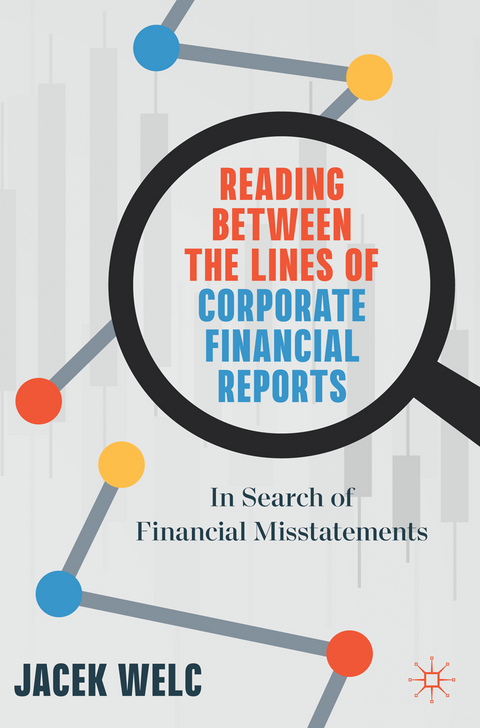
Reading Between the Lines of Corporate Financial Reports
Springer International Publishing (Verlag)
978-3-030-61043-2 (ISBN)
Corporate financial reports are used widely by managers, investors, creditors, and government agencies to examine company performance and evaluate potential risks. However, although seemingly an invaluable source of information for managerial decision-making, financial reports are often based on rough simplifications of a very complex reality. With no way of avoiding deliberate manipulations and fraudulent activity, these statements cannot be relied on completely when selecting stocks or evaluating credit risk, and therefore poor analysis can lead to potentially disastrous investment decisions.
The author suggests that in order to effectively interpret corporate financial reports, we must 'read between the lines' to accurately assess a company's economic performance and predict its long-term viability.
lt;b>Jacek Welc is an Assistant Professor at Wroclaw University of Economics, Poland, and a Lecturer in Corporate Finance at SRH Berlin University of Applied Sciences, Germany. From 2003 to 2007, he was an independent consultant in the areas of corporate valuation, management accounting, and financial accounting. Having also been Head of the Corporate Finance Department at Dexus Partners, Jacek now co-owns a consultancy specialising in corporate financial services called WNP Ekspert. He has written and published a number of articles, as well as a book entitled Applied Regression Analysis for Business: Tools, Traps and Applications (Springer, 2017).
Chapter 1. Most common distortions in a financial statement analysis caused by objective weaknesses of accounting and analytical methods.- Chapter 2. Other "noise" in a financial statement analysis caused by objective weaknesses of accounting and analytical methods.- Chapter 3. Deliberate accounting manipulations: introduction and revenue-oriented accounting gimmicks.- Chapter 4. Deliberate accounting manipulations: expense-oriented accounting gimmicks and intentional profit understatements.- Chapter 5. Evaluation of financial statement reliability and comparability based on Auditor's opinion, narrative disclosures and cash flow data.- Chapter 6. Problems of comparability and reliability of reported cash flows.- Chapter 7. Evaluation of financial statement reliability and comparability based on quantitative tools other than cash flows: primary warning signals.- Chapter 8. Evaluation of financial statement reliability and comparability based on quantitative toolsother than cash flows: additional warning signals.- Chapter 9. Techniques of increasing comparability and reliability of reported accounting numbers: selected simple tools.- Chapter 10. Techniques of increasing comparability and reliability of reported accounting numbers: some more advanced tools
| Erscheinungsdatum | 01.12.2021 |
|---|---|
| Zusatzinfo | XL, 431 p. 279 illus., 3 illus. in color. |
| Verlagsort | Cham |
| Sprache | englisch |
| Maße | 155 x 235 mm |
| Gewicht | 718 g |
| Themenwelt | Wirtschaft ► Betriebswirtschaft / Management ► Finanzierung |
| Wirtschaft ► Betriebswirtschaft / Management ► Rechnungswesen / Bilanzen | |
| Betriebswirtschaft / Management ► Spezielle Betriebswirtschaftslehre ► Bankbetriebslehre | |
| Schlagworte | Accounting • balance sheet • Business Analyst • Cash Flow Statement • Corporate accounting • Corporate financial officer • Credit risk analyst • Decision-Making • Economic perfomance • financial collapse • Financial Data • Financial Reporting • Financial Statement Analysis • Financial Statements • Fraud • income statement • Investment • Risk • Stock Market • Stock valuation |
| ISBN-10 | 3-030-61043-8 / 3030610438 |
| ISBN-13 | 978-3-030-61043-2 / 9783030610432 |
| Zustand | Neuware |
| Informationen gemäß Produktsicherheitsverordnung (GPSR) | |
| Haben Sie eine Frage zum Produkt? |
aus dem Bereich


